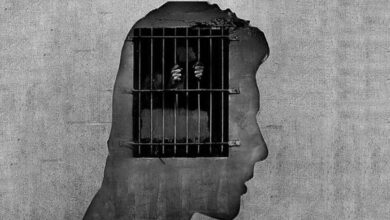On Jan. 1, 2020, the Financial Accounting Standards Board quietly imposed new guidelines for taking provisions for anticipated future loan losses called the Current Expected Credit Losses rule, or CECL. Now, as the effects of the pandemic on consumers’ wallets begin to emerge, that rule has taken on new importance. The reason: The new regime requires lenders to look far into the future and book all the losses they expect on credit cards and other borrowings—over the entire life of the loans—right now. That new practice should give investors a much clearer window into where the consumer is headed than the old regime, which mandated estimating defaults only for borrowers who had ceased paying interest, and hence furnished only a short-term picture. Giving a more comprehensive view of losses to come also provides one of the best road maps for where the overall economy is headed.
Here’s the background. Bank loans can be divided into two general categories for accounting treatment: the first for credit cards, and the second for other consumer credit such as mortgages, and for business loans. Before CECL, the banks took provisions based mainly on the volume of loans in their portfolios that became “noncurrent,” meaning borrowers had ceased paying interest. Those problem credits were labeled as “nonaccrual,” meaning that the bank had stopped recognizing revenue from the interest it was billing the borrower, but the borrower wasn’t paying. That traditional system was called the “incurred loss model,” meaning that banks started taking provisions on loans mainly when borrowers stopped making payments.
For non-card loans, if a customer hadn’t paid interest, typically for 90 days or more, the bank classified the account as “nonperforming.” Many of those credits were secured—think home and car loans—so bankers would estimate the amounts they would likely recover by selling the houses, buildings, or other assets provided as collateral, and eventually book the shortfall by adding to that quarter’s provisions for loan losses that are a direct hit to pretax income. The provisions added to “reserves” or “allowances” for credit losses on the balance sheet. When it became clear the loan would never be repaid, the remaining principal amount went to “charge-offs,” or what’s called “loan losses” in the industry, that are subtracted from reserves. Put simply, it’s provisions for future losses that increase reserves, and charge-offs that lower them.
For cards, the approach was different. The provisions depended on the “roll rate” of the portfolio. As different borrowers went from 30 to 60 to 90 or more days delinquent, their loans descended from one credit bucket to the next. The bank booked provisions based on its estimates of which noncurrent loans in each bucket would never be repaid. The longer the loan remained delinquent, the larger the portion of the principal amount that the bank estimated wouldn’t be repaid, and the larger the provision on that loan became.
A credit card loan that was delinquent for, say, 90 days, was also tagged as “nonperforming” like a mortgage or corporate loan. But once the credit became 180 days delinquent, it went to charge-off status and was written off as a 100% loss. That loss was then deducted from reserves. “Credit card loans are unsecured consumer lending,” says David Fanger, an analyst with Moody’s Investor Service. “They’re the riskiest form of borrowing. The lender has no collateral. They’re depending on the borrowers’ savings and income.”
The test for booking provisions, Fanger explains, was based primarily on assessing future losses on noncurrent loans, the credits that weren’t paying interest. The lender did have some obligation to look to the future. The requirement was to assess the outlook for the next 12 months and determine whether, say, a looming recession was likely to cause losses on loans that were still current, but shaky. The banks would then add those still paying but probable bad credits to their provisions. Still, the rules didn’t require estimating losses on current but endangered loans, those regularly paying interest, beyond a year ahead.
CECL transformed that methodology. Suddenly banks were mandated to forecast potential losses for the entire life of the loan. “Now they’re provisioning not just for the loans that have gone delinquent, but the ones that are current and may go bad at any time in the future,” says Fanger. For example, if a card loan is now current but BofA projects a high probability that it will default in 18 months, BofA is required to book a loss now, whereas under the “incurred” model, it would have booked the provision a few quarters hence, when the borrower actually stops paying interest. The idea is to front-load all of the provisions based on the best estimate of all losses to come for current and delinquent loans alike.
CECL is a game changer. Under the old rule based on the accrual model, provisions tended to build gradually as a deepening recession caused more and more defaults. “But the new regime means that banks are taking much larger provisions based on their best guess at the moment of what total losses will be on still-current loans,” says Bain Rumohr, senior director of North American banks at Fitch Ratings. CECL’s arrival coincided with the COVID-19 crisis, and the combination is forcing banks to take the entire hit, right now, for all estimated future losses, on all their loans, caused by the crisis.
The new rule is designed to give investors and regulators a much more accurate picture, far sooner, of how bad things will get in a recession. In Q2, BofA and the other big banks supplied their best estimate for all of the damage they expect the pandemic to inflict going forward. If BofA is correct, it has already charged earnings for the bad stuff to come from the COVID-19 crisis. The problem is we’ve never seen a hurricane like COVID-19. If it rages far longer than BofA projects, even its conservative assumptions may get swamped by losses on consumer credit that even its most sophisticated models and the seasoned experts could never foresee.
Source: Fortune




